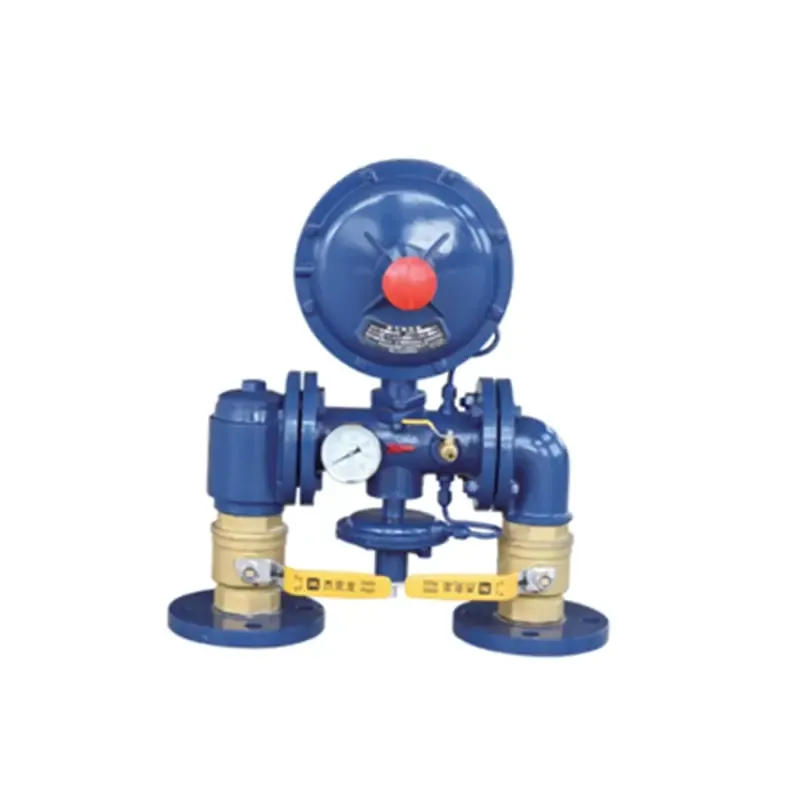
Dec . 06, 2024 02:34
Back to list
pressure reducing valve
Understanding Pressure Reducing Valves Functionality and Applications
Pressure reducing valves (PRVs) play a crucial role in managing fluid pressure within various industrial and commercial settings. These devices are designed to automatically decrease the pressure of incoming fluid, ensuring that downstream systems operate efficiently and safely. This article delves into the functionality, types, and applications of pressure reducing valves, highlighting their importance in modern engineering and fluid management systems.
Functionality of Pressure Reducing Valves
The primary function of a pressure reducing valve is to maintain a constant outlet pressure, regardless of variations in inlet pressure or flow rate. This is particularly important in systems where equipment and processes can be adversely affected by excessive pressure. By regulating the flow of fluids—such as water, steam, gas, or oil—PRVs serve to protect downstream equipment from damage and ensure optimal operation.
Most pressure reducing valves operate on the principle of a diaphragm or piston that moves in response to pressure changes. When fluid enters the valve, it exerts pressure against the diaphragm. If this pressure exceeds the preset level, the diaphragm moves to restrict the flow, thereby reducing the downstream pressure. Conversely, if the pressure drops, the diaphragm allows more fluid to pass through, thus maintaining the desired pressure. Some advanced PRVs also come with electronic controls, enabling real-time adjustments and monitoring for even greater efficiency.
Types of Pressure Reducing Valves
There are several types of pressure reducing valves designed to cater to different applications and pressure requirements
. The most common types include1. Direct-acting PRVs These valves are typically used for lower flow rates and are characterized by their simple design. They provide a straightforward way to control pressure using a spring mechanism.
2. Pilot-operated PRVs Ideal for larger flow applications, these valves utilize a small pilot valve to control a larger main valve. The pilot valve responds to changes in downstream pressure, allowing for more precise control and better performance under varying flow conditions.
3. Electronic PRVs Incorporating advanced technology, electronic pressure reducing valves provide enhanced control over pressure levels through automated systems. They are particularly suitable for applications where precision is critical, such as in pharmaceuticals or high-tech manufacturing.
pressure reducing valve

Applications of Pressure Reducing Valves
PRVs are widely used across various industries due to their ability to enhance performance and safety. Some of the key applications include
1. Water Supply Systems In municipal water distribution networks, PRVs help maintain consistent water pressure, preventing pipe bursts and ensuring that water reaches all users efficiently.
2. HVAC Systems In heating, ventilation, and air conditioning systems, PRVs regulate pressure in steam and water systems, optimizing performance and energy efficiency.
3. Oil and Gas In the oil and gas industry, PRVs ensure safe and efficient operation of pipelines, refineries, and processing plants by maintaining appropriate pressure levels.
4. Manufacturing Many manufacturing processes require specific pressures for machinery and equipment. PRVs ensure that these pressures are maintained, enhancing productivity and safety.
5. Irrigation Systems In agricultural settings, PRVs help manage pressure in irrigation systems, ensuring uniform water distribution and efficient use of resources.
Conclusion
Pressure reducing valves are indispensable components in ensuring the safe and efficient operation of various fluid systems. By maintaining consistent pressure levels, they protect equipment, optimize performance, and contribute to the overall reliability of operations across numerous industries. As technology advances, the design and functionality of PRVs will likely continue to evolve, further enhancing their role in fluid management and control systems. Understanding these devices is crucial for engineers and technicians who design and maintain systems that rely on precise pressure regulation.
Latest news
-
Safety Valve Spring-Loaded Design Overpressure ProtectionNewsJul.25,2025
-
Precision Voltage Regulator AC5 Accuracy Grade PerformanceNewsJul.25,2025
-
Natural Gas Pressure Regulating Skid Industrial Pipeline ApplicationsNewsJul.25,2025
-
Natural Gas Filter Stainless Steel Mesh Element DesignNewsJul.25,2025
-
Gas Pressure Regulator Valve Direct-Acting Spring-Loaded DesignNewsJul.25,2025
-
Decompression Equipment Multi-Stage Heat Exchange System DesignNewsJul.25,2025

